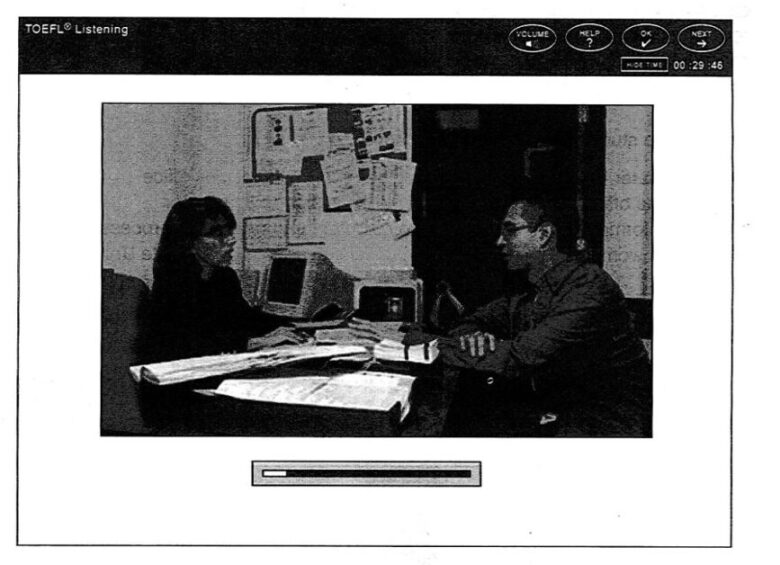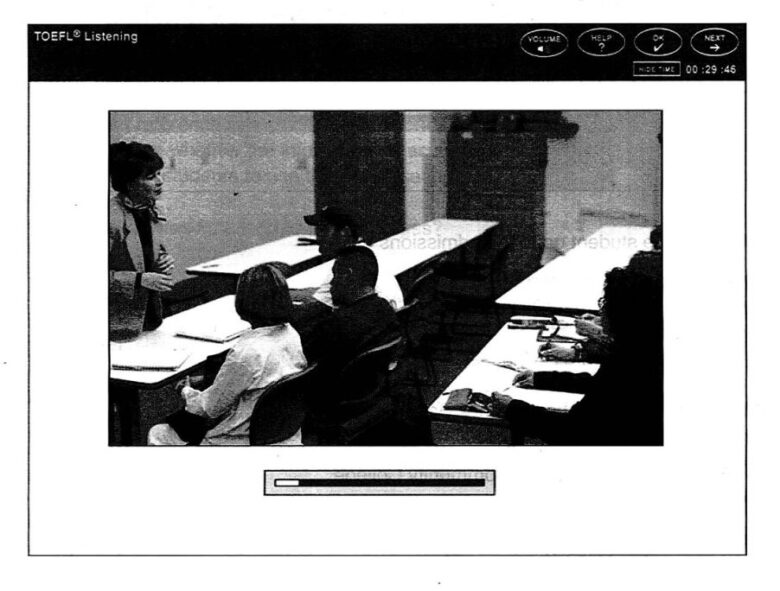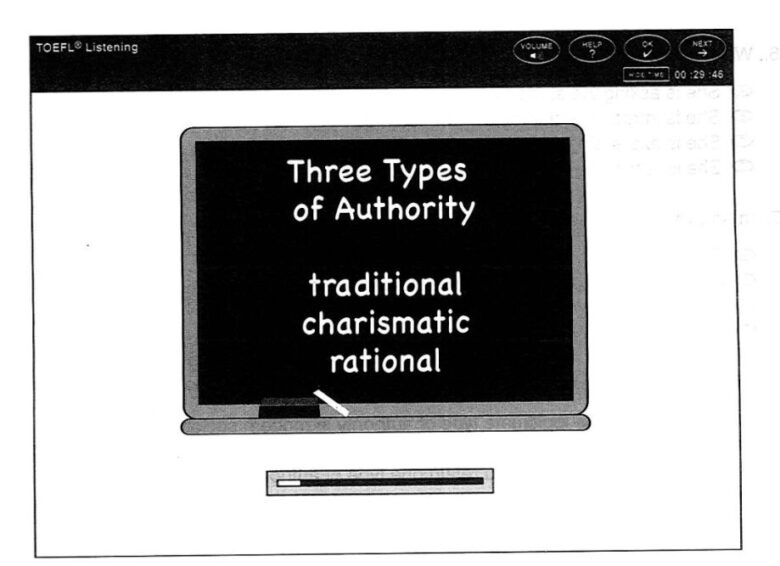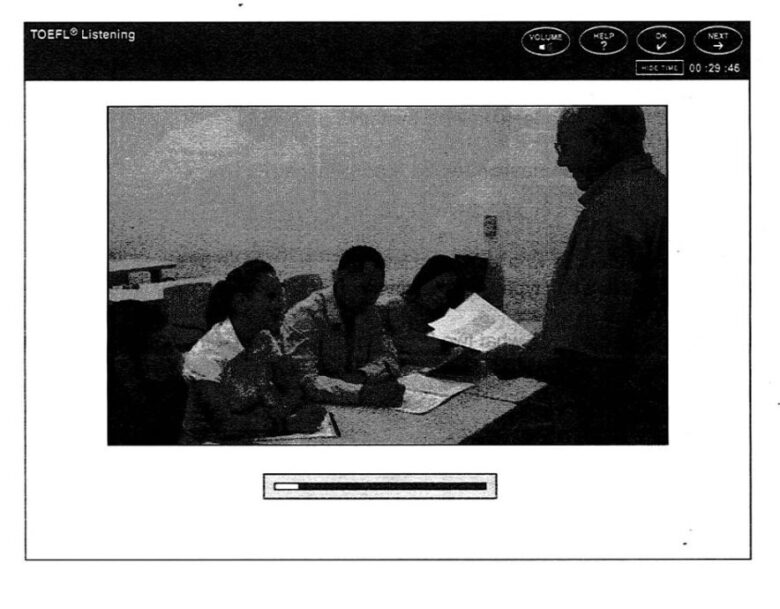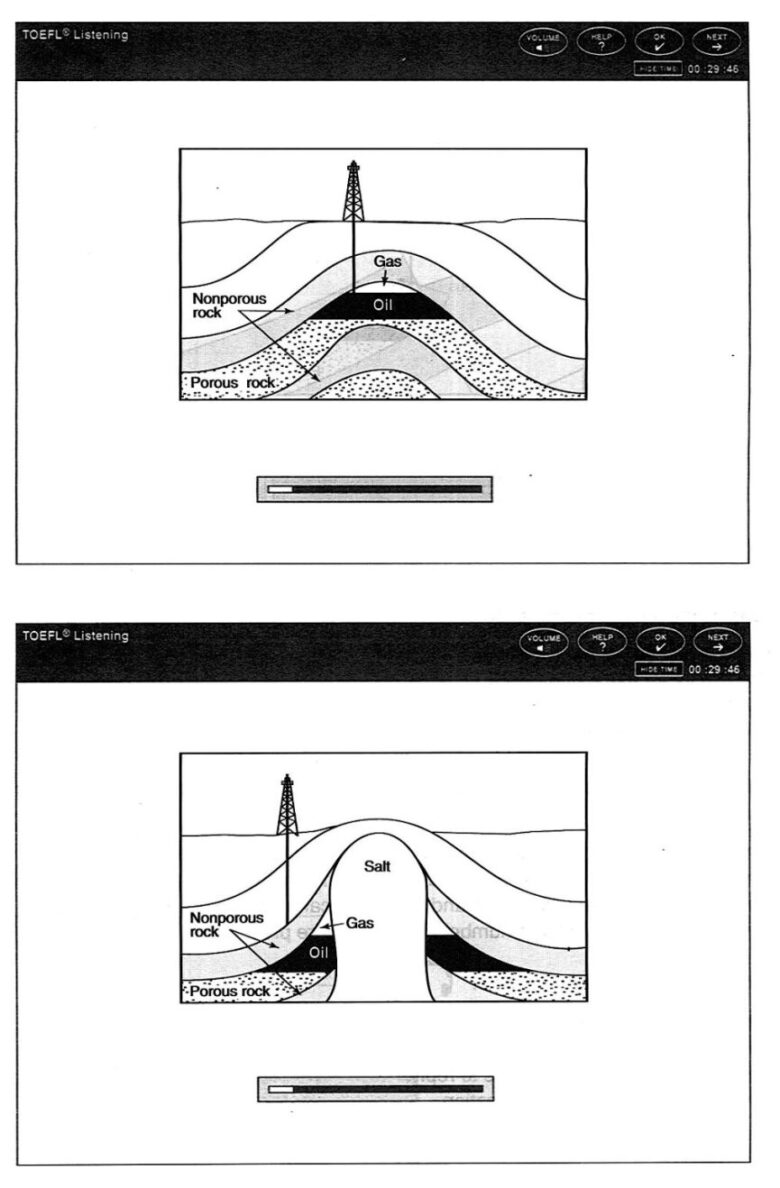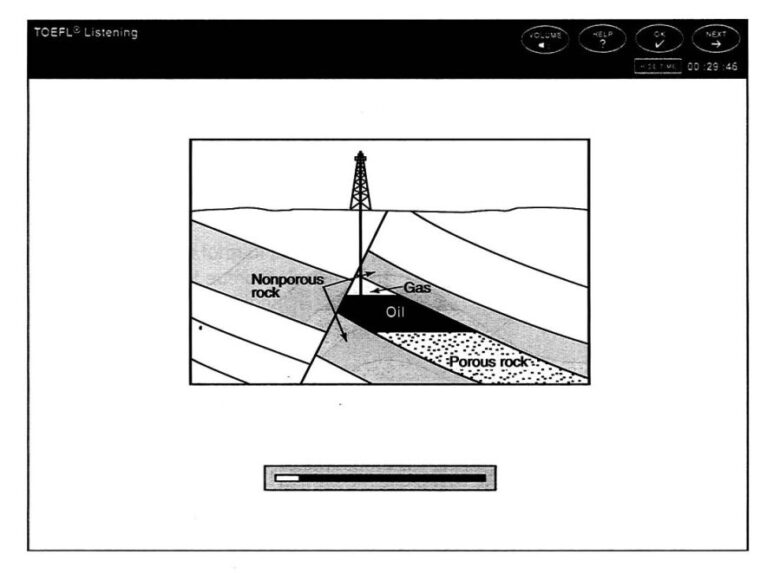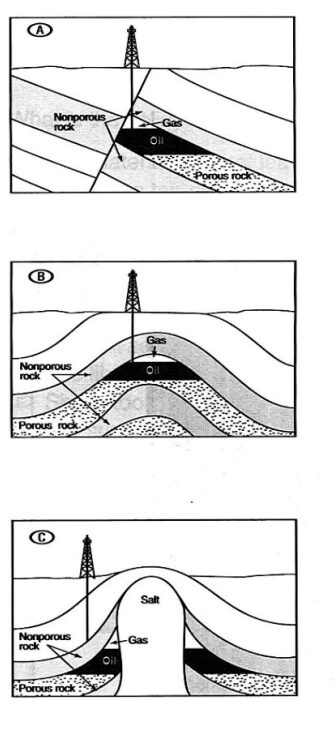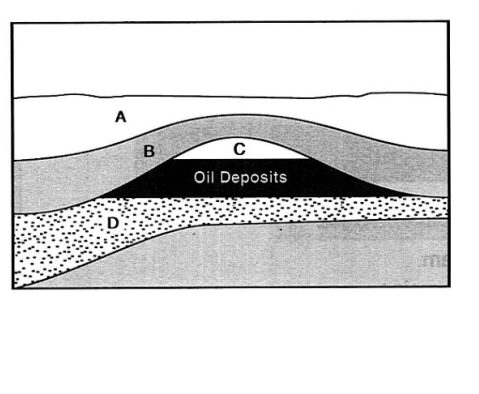Listening 4 ” Admission Office”
18. Why does the student go to the admissions office?
CD He is applying for financial aid.
CD He is requesting an official transcript.
CD He is transferring to another college.
CD He is trying to enroll in classes.
19. What is missing from the student’s file?
CD A financial aid application
CD A transcript from County Community College
CD Grades from Regional College
CD An official copy of the application
20. Why does the woman say this:
CD She is asking the man to finish explaining the situation.
CD She is confirming that she understands the problem.
CD She is expressing impatience with the man’s explanation.
CD She is trying to comprehend a difficult question.
21. What does the woman suggest that the man do?
CD Make a copy of his transcripts for his personal file
CD Complete all of the admissions forms as soon as possible
CD Change his provisional status to regular status before registering
CD Continue to request an official transcript from County Community College
22. What will the student most probably do now?
CD Return later in the day to see the woman in the admissions office
CD Go to the office for transfer students to be assigned an advisor
CD Enter information in the computer to complete the application process
CD See the woman’s superior to get a provisional admission to State University
Listening 5 “Anthropology Class”
23. What is the main purpose of this lecture?
CD To discuss three types of authority
CD To distinguish between power and authority
CD To examine alternatives to Weber’s model
CD To argue in favor of a legal rational system
24. Why does the professor mention Kennedy and Reagan?
CD They were founders of political movements.
CD They were examples of charismatic leaders.
CD They were attorneys who led by the law.
CD They had contrasting types of authority.
25. According to the professor, what two factors are associated with charismatic authority?
Click on 2 answer choices.
A. Sacred customs
B. An attractive leader
C. A social cause
D. Legal elections
26. Why does professor say this:
CD She is asking the students to answer a question.
CD She is introducing the topic of the lecture.
CD She is expressing an opinion about the subject.
CD She is reminding students of a previous point.
27. In an evolutionary model, how is rational legal authority viewed?
CD The most modem form of authority
CD A common type of authority in the industrial age
CD Authority used by traditional leaders
CD A replacement for the three ideal types of authority
28. What does the professor imply about the three types of authority?
CD There is only one legitimate type of authority in modem societies.
CD Sociologists do not agree about the development of the types of authority.
CD Societies tend to select and retain one type of authority indefinitely.
CD Weber’s model explains why the social structure rejects power over time.
Listening 6 “Geology Class”
29. What is the lecture mainly about?
CD The process of photosynthesis
CD The major types of oil traps
CD A method for collecting gas
CD A comparison of gas and oil
30. Why does the professor begin by talking about the process that transforms organic material into oil and gas?
CD He is introducing the main topic by providing background information.
CD He is not very organized and he digresses a lot in the lecture.
CD He wants the class to understand why hydrocarbons remain on the surface.
CD He has to define a large number of terms before proceeding.
31. Why does the professor say this:
CD He wants the class to participate more.
CD He thinks that the reason is not logical.
CD He wants all of the students to reply.
CD He plans to answer the question.
32. Select the diagram of the anticline trap that was described in the lecture. Click on the correct diagram.
33. Identify the nonporous rock in the diagram. Click on the correct letter.
34. According to the professor, what do geologists look for when they are trying to locate a salt dome?
CD A bulge in an otherwise flat area
CD Underground rocks shaped like an arch
CD Salt on the surface of a large area
CD A deep crack in the Earth


